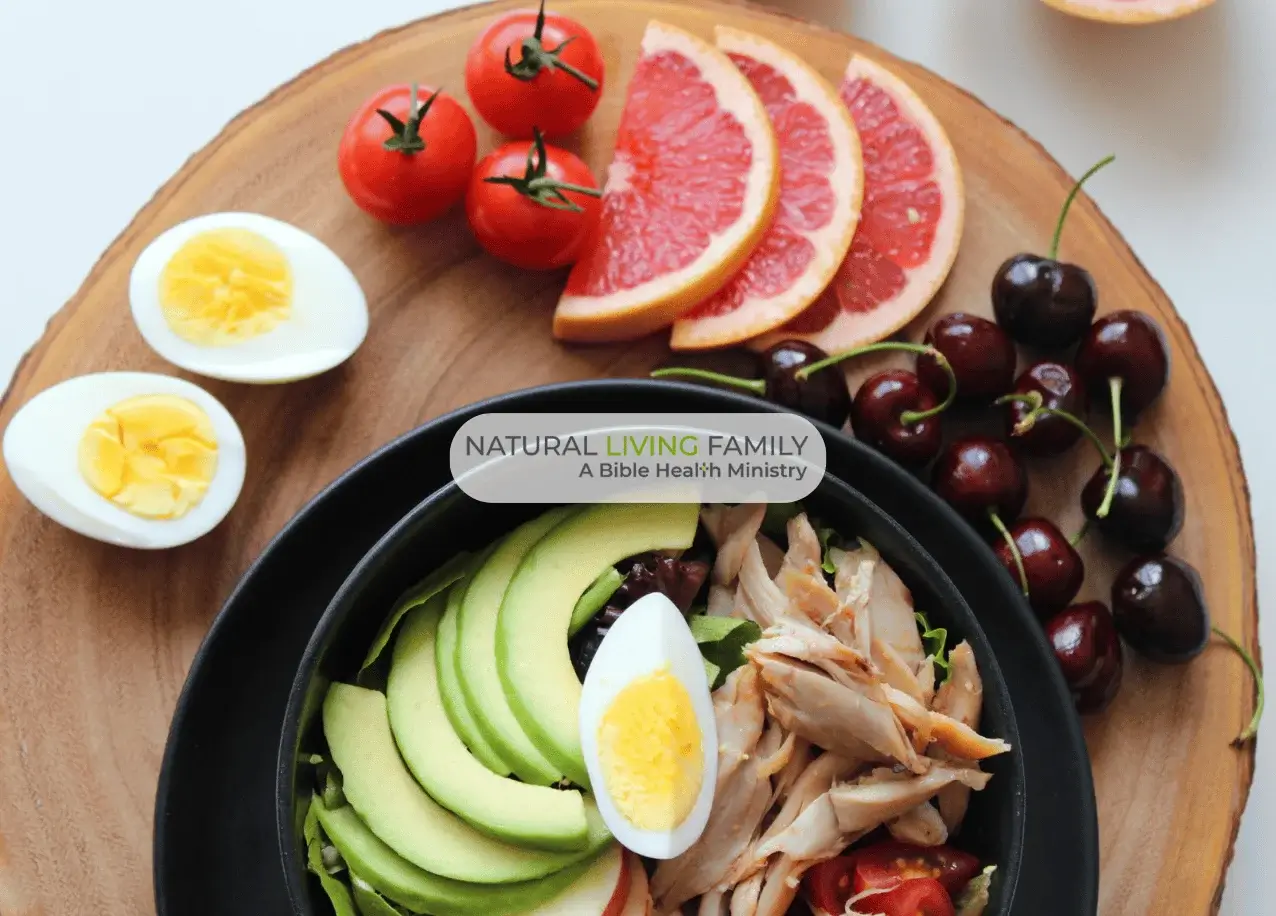Green shakes, smoothies, and juices seem to be a hot topic of conversation these days. It’s no shock as word of their immune-boosting power continues to spread. In addition, they are even a fantastic meal replacement for busy folks, such as myself, which is why the health benefits of kale make it one of the most common ingredients found in these green superfood brews!
Table of Contents
Kale is a Cruciferous Super Power
Kale is part of a renowned group of cancer-fighting vegetables and is on its way to becoming one of the most prevalent superfood greens today. Decorative kale has also taken conventional landscapes by storm. With its dazzling blue, red, and white interior, these varieties of kale are appetizing as well! (1)
Having many health benefits and being used in healthy eating as far back as ancient Rome, kale was the green leafy vegetable of choice in the Middle Ages. Included in the Acephala group of the Brassica oleracea species that includes collard greens, there are two main varieties of kale: one that has green leaves and one that has purple. Remarkably, the principal leaves do not form a head, which is one reason why kale is said to be closely related to wild cabbage. (1)
Leaf type is the most common classification:
- Plain
- Dinosaur kale, Black cabbage (Cavolo nero)
- Scots kale (curly)
- Hybrid of curly and plain (leaf and spear)
As part of the Brassica oleracea vegetable species, kale health benefits are shared by its cruciferous veggie cousins. Rich in glucosinolates, eating cruciferous vegetables is great for inflammation, infections (bacterial / viral), and even cancer!
Other cruciferous vegetables for healthy, delicious recipes include:
- Broccoli
- Cabbage
- Radish
- Arugula
- Cauliflower
- Bok Choy
- Turnip
- Brussel sprouts
- Watercress
- Mustard greens
The Importance of Eating Organic Kale
According to the non-profit Environmental Working Group (EWG), two-thirds of the produce sampled has been sprayed with pesticides and non-organic kale ranks amongst the world’s most heavily polluted crops in the world. Referred to EWG’s “Dirty Dozen Plus” this list includes (2):
- Apples
- Celery
- Cherry tomatoes
- Cucumbers
- Grapes
- Kale/collards
- Nectarines
- Peaches
- Potatoes
- Snap peas
- Spicy peppers
- Strawberries
- Sweet bell peppers
According to the EWG report, non-organic kale is one of the worst because, “Among the chemicals at issue are organophosphate and carbamate insecticides no longer detected widely on other produce, either because of binding legal restrictions or voluntary phase-outs.”
Bottom line: only eat organic vs non-organic with this green, because the kale health benefits can be totally negated!
Kale Nutrition Facts
To give you a feel for how nutritious it is, kale health benefits are due to the following: (3)
Protein: (4%)
Fatty Acids:
- Omega-3 fatty acids (121 mg)
- Omega-6 fatty acids (92.4 mg)
Minerals:
- Calcium (9%)
- Copper (10%)
- Folate (5%)
- Iron (6%)
- Magnesium (6%)
- Manganese (26%)
- Phosphorus (4%)
- Potassium (9%)
- Selenium (1%)
- Sodium (1%)
- Zinc (2%)
Vitamins:
- Niacin (3%)
- Pantothenic Acid (1%)
- Riboflavin (5%)
- Thiamin (5%)
- Vitamin A (206%)
- Vitamin K (684% recommended daily value)
- Vitamin C (134%)
- Vitamin B6 (9%)
A rich source of vitamins and minerals, the vitamin K makeup in one cup of cooked kale stands out considerably among the other nutrients. Playing a crucial part in blood clotting and extreme bleeding inhibition, some experts are now looking to vitamin K as a natural way to treat osteoporosis, but the research is inconsistent so the medical community has not embraced it yet. (4)
7 Health Benefits of Kale
Of the kale health benefits that doctors and researchers have accepted, these 7 stand out:
1. Cancer Prevention
Like all of cancer-fighting cruciferous vegetables, kale can stop cancer in its tracks. Research has revealed, for instance, that more than 70 percent of all studies directed toward cruciferous vegetables have found they guard against cancer. (5)
According to the National Cancer Institute, the secret behind the cancer-killing ability of cruciferous veggies is that they are rich in glucosinolates – a large group of sulfur-containing compounds. (6) These powerful substances break down during the chewing and digestion process into biologically active mixtures that stop cancer cell development, which is referred to as indoles, thiocyanates, and isothiocyanates.
Revealed to prevent cancer growth in rats and mice, indoles and isothiocyanates have signaled they protect against cancer of the bladder, breast, colon, liver, lung, and stomach. There are numerous explanations why indoles and isothiocyanates stop cancer from spreading. They are known to: (6)
- Contains anti-inflammatory properties.
- Contains antiviral and antibacterial properties.
- Guard cells from DNA damage.
- Incapacitate carcinogens.
- Prevent tumor blood vessel creation.
- Prevent tumor cell passage.
- Trigger cell death (apoptosis).
2. Supporting Heart Health
Deirdre Orceyre, a naturopathic doctor at the Center for Integrative Medicine at the George Washington University Medical Center, says, “Any vegetable that has a very deep color the way kale does, that means there is a high concentration of nutrients, and that translates into a range of antioxidant and anti-inflammatory effects in the body.” (7) This dominant antioxidant and anti-inflammatory duo in kale makes it a flawless food for cardiovascular strength.
According to registered dietitian and nutritionist Cheryl Harris, “Brassica vegetables are known to help with general health as well as heart disease and cancer, but even among this group kale stands out.” (7) Harris says that this is due to the fact that kale has a healthy variety of antioxidants and also noteworthy levels of Vitamin K and a type of Vitamin E that seems to be heart-healthy. It has been revealed to lower cholesterol in medical research and increase the HDL: LDL ratio by up to 27 percent! (8)
3. Soothes Inflammation
Possibly the most useful property of kale is its ability to be a powerful anti-inflammatory. When you think of the perfect omega-3:omega-6 ratio, kale is the “perfect food.” According to a study published in Biomedicine and Pharmacotherapy, (9)
“Several sources of information suggest that human beings evolved on a diet with a ratio of omega-6 to omega-3 essential fatty acids of approximately 1 whereas in Western diets the ratio is 15/1-16.7/1. Western diets are deficient in omega-3 fatty acids, and have excessive amounts of omega-6 fatty acids compared with the diet on which human beings evolved and their genetic patterns were established.”
Being “pro-inflammatory,” the omega-6 rich foods that many people consume cause a long-lasting inflammatory condition on a massive scale. This has been connected to almost every disease known to man. Kale, however, is a creation of God and therefore naturally promotes the pro-inflammatory omega-6 and anti-inflammatory omega-3 balance. Nearly at a 1:1 ratio, kale contains slightly more omega-3s, which can help reduce the negative effects that people experience when they eat omega-6 rich processed foods loaded with vegetable and canola oils.
4. Detoxification
Being a powerful one-two punch against toxins and free radicals, studies show the isothiocyanates (ITCs) made from glucosinolates in kale helps cleanse your body at the cellular level. Basically, because toxins pose a danger to your body they must not only be demolished (via antioxidants), they must be removed (detoxification). This is where glucosinolates come in. In the words of the George Mateljan Foundation: (9)
“The two steps in the process are called Phase I detoxification and Phase II detoxification. The ITCs made from kale’s glucosinolates have been shown to favorably modify both detox steps (Phase I and Phase II). In addition, the unusually large numbers of sulfur compounds in kale have been shown to help support aspects of Phase II detoxification that require the presence of sulfur. By supporting both aspects of our cellular detox process (Phase I and Phase II), nutrients in kale can give our body an ‘edge up’ in dealing with toxic exposure, whether from our environment or from our food.”
This is significant to our conversation on the health benefits of kale since, according to an article published in the International Journal for Vitamin and Nutrition Research, ITCs ignite the creation of Phase II enzymes. (10)
5. Antioxidant
Hand-in-hand with its anti-inflammatory power, kale health benefits include being a wonderful antioxidant. Of the three key antioxidant vitamins on the planet, kale is predominantly rich in vitamin C and beta-carotene (the precursor to vitamin A). (11) This is significant since antioxidants are known to counter the harm triggered by free radicals. (12)
Your body is exposed to unbalanced free radical particles every day through the contaminated air that we breathe, poisons in our food and chemicals in our water. These cause “oxidative stress,” a method that causes cell damage and has been linked to everything from heart disease to cancer to cataracts. Oxidative pressure is said to be one of the chief contributing influences to neurocognitive syndromes such as Parkinson’s disease and Alzheimer’s disease.
6. Improved Vision
Two nutrients that give kale its dark green hue, lutein, and zeaxanthin, have been shown to help prevent macular degeneration and cataracts. Because they act as antioxidants in the eye and filter harmful high-energy blue wavelengths of light, the American Optometric Association (AOA) states that they literally help protect and maintain healthy cells. According to the AOA, “Of the 600 carotenoids found in nature, only two are deposited in high quantities in the retina (macula) of the eye: lutein and zeaxanthin.” (13)
7. Brain Health
Being a prized source of folate, when consumed regularly, kale health benefits can help prevent several birth defects and promote healthy birth weight, strong neural tube formation, as well as suitable growth of the face and heart.
This is vital data for all women of childbearing age as most specialists push folic acid supplementation, which is an artificial form of naturally occurring folate that has been linked to:
- Brain fog
- Epilepsy
- Libido dysfunction
- Mood imbalance
- Sleep disorders
- Vitamin B12 deficiency
3 Tasty Ways to Eat Kale
My three favorite ways to incorporate the health benefits of kale into my diet are:
- Lightly steamed (5 minutes max)
- Shredded (great in salads)
- Lightly sautéed with fresh garlic cloves and onions.
Mama Z has also developed some delicious, allergy-friendly recipes using Kale such as:
With so many delicious ways to use kale and such incredible health benefits kale should be part of your regular meal planning. Yum!
References:
- https://en.wikipedia.org/wiki/Kale
- https://www.ewg.org/foodnews/
- http://nutritiondata.self.com/facts/vegetables-and-vegetable-products/2461/2
- http://www.webmd.com/vitamins-and-supplements/lifestyle-guide-11/supplement-guide-vitamin-k
- http://www.webmd.com/food-recipes/features/super-veggies-cruciferous-vegetables
- https://www.cancer.gov/about-cancer/causes-prevention/risk/diet/cruciferous-vegetables-fact-sheet
- https://www.washingtonpost.com/national/health-science/eat-your-kale/2012/09/24/95a4d756-018f-11e2-9367-4e1bafb958db_story.html?utm_term=.e886bccf046f
- https://www.ncbi.nlm.nih.gov/pubmed/18548846
- http://www.whfoods.com/genpage.php?tname=foodspice&dbid=38
- https://www.ncbi.nlm.nih.gov/pubmed/11887749
- http://www.webmd.com/food-recipes/antioxidants-your-immune-system-super-foods-optimal-health
- https://nccih.nih.gov/health/antioxidants/introduction.htm
- https://www.aoa.org/patients-and-public/caring-for-your-vision?sso=y











